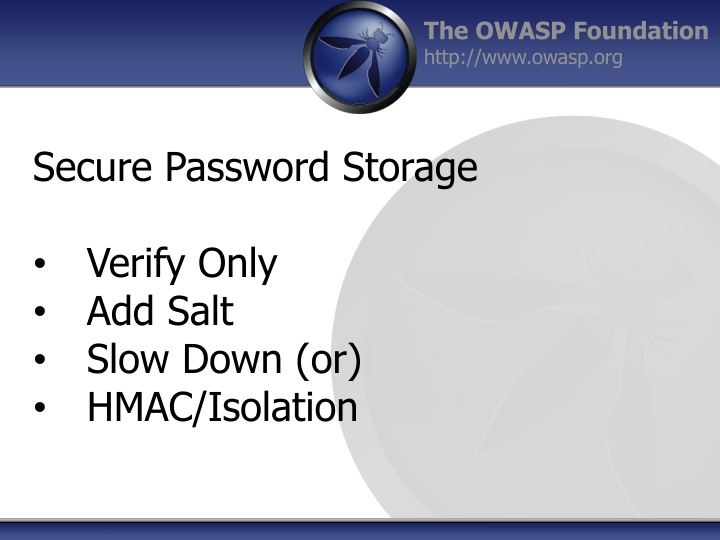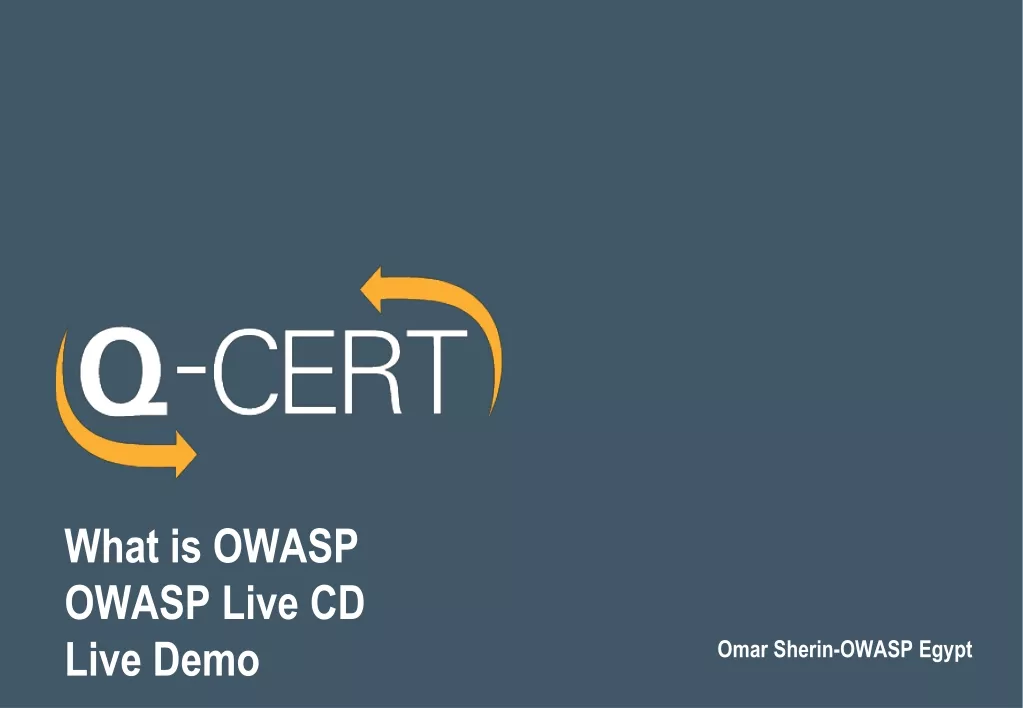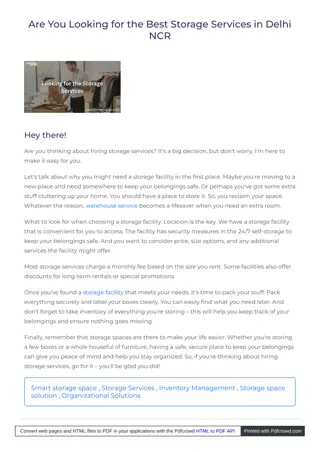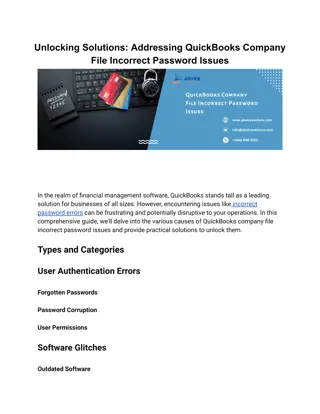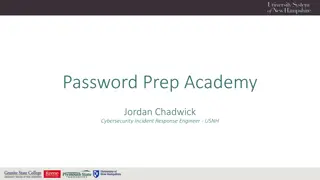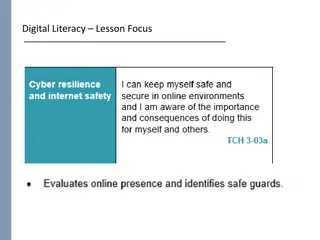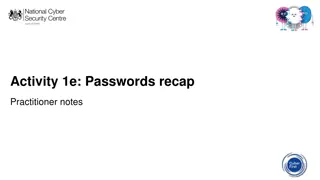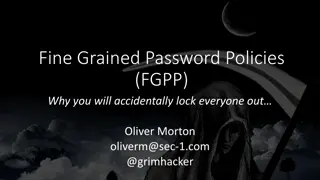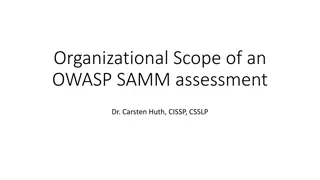Best Practices for Secure Password Storage - OWASP Foundation Guidelines
Learn about secure password storage techniques recommended by OWASP Foundation, including adding salt, slowing down hashing functions, using HMAC isolation, and imposing difficult verification processes on attackers. Remember to use proper encoding, avoid limiting password types or lengths unreasonably, and implement strong credential-specific salts. Stay cautious of unlimited password sizes, and consider techniques like HMAC-SHA-256, PBKDF2, and SCRYPT for robust protection against various attacks.
Download Presentation

Please find below an Image/Link to download the presentation.
The content on the website is provided AS IS for your information and personal use only. It may not be sold, licensed, or shared on other websites without obtaining consent from the author.If you encounter any issues during the download, it is possible that the publisher has removed the file from their server.
You are allowed to download the files provided on this website for personal or commercial use, subject to the condition that they are used lawfully. All files are the property of their respective owners.
The content on the website is provided AS IS for your information and personal use only. It may not be sold, licensed, or shared on other websites without obtaining consent from the author.
E N D
Presentation Transcript
The OWASP Foundation http://www.owasp.org Secure Password Storage Verify Only Add Salt Slow Down (or) HMAC/Isolation
The OWASP Foundation http://www.owasp.org
The OWASP Foundation http://www.owasp.org http://www.md5decrypter.co.uk md5("password123!") = b7e283a09511d95d6eac86e39e7942c0 md5("86e39e7942c0password123!") = f3acf5189414860a9041a5e9ec1079ab
The OWASP Foundation http://www.owasp.org 1) Do not limit the type of characters or length of user password within reason Limiting passwords to protect against injection is doomed to failure Use proper encoder and other defenses described instead Be wary of systems that allow unlimited password sizes (Django DOS Sept 2013)
The OWASP Foundation http://www.owasp.org 2) Use a cryptographically strong credential-specific salt protect( [salt + password] ); Use a 32char or 64char salt (actual size dependent on protection function); Do not depend on hiding, splitting, or otherwise obscuring the salt
The OWASP Foundation http://www.owasp.org 3a) Impose difficult verification on [only] the attacker HMAC-SHA-256 ( private key, [salt + password] ) Protect this key as any private key using best practices Store the key outside the credential store Build the password-to-HMAC conversion as a separate web-service (cryptographic isolation).
The OWASP Foundation http://www.owasp.org 3b) Impose difficult verification on the attacker and defender (weak/slow) PBKDF2( [salt + password], c=10,000,000 ); Use PBKDF2 when FIPS certification or enterprise support on many platforms is required SCRYPT([salt + password], work factor 10, .5 GB ram) Use SCRYPT where resisting any/all hardware accelerated attacks is necessary but enterprise support and scale is not
The OWASP Foundation http://www.owasp.org Password1!
The OWASP Foundation http://www.owasp.org Google, Facebook, PayPal, Apple, AWS, Dropbox, Twitter Blizzard's, Valve's Steam, Yahoo, Chase, RBS Bank
Forgot Password Secure Design The OWASP Foundation http://www.owasp.org Require identity questions Last name, account number, email, DOB Enforce lockout policy Ask one or more good security questions https://www.owasp.org/index.php/Choosing_and_Using_Secur ity_Questions_Cheat_Sheet Send the user a randomly generated token via out-of-band email, SMS or token Verify code in same web session Enforce lockout policy Change password Enforce password policy
